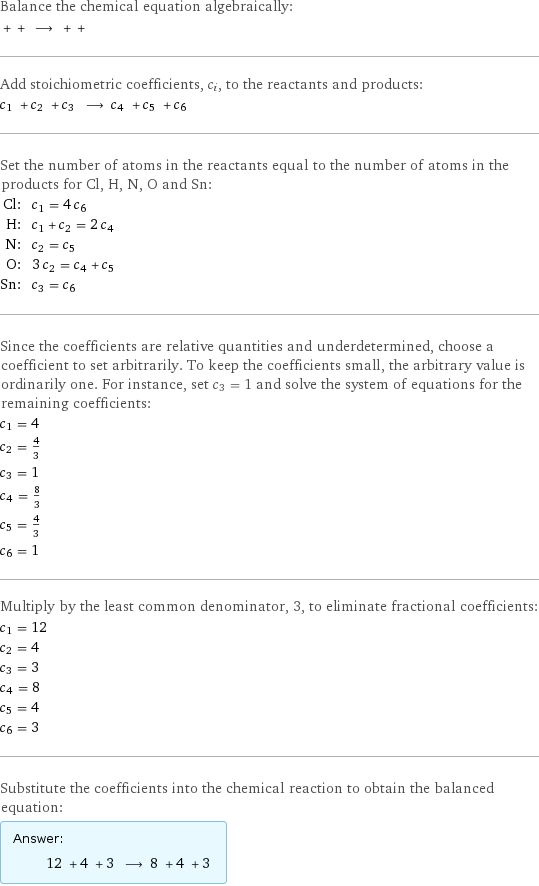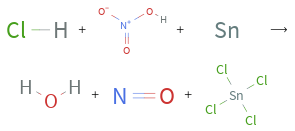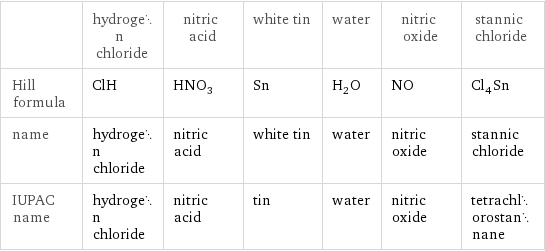Input interpretation

hydrogen chloride + nitric acid + white tin ⟶ water + nitric oxide + stannic chloride
Balanced equation

Balance the chemical equation algebraically: + + ⟶ + + Add stoichiometric coefficients, c_i, to the reactants and products: c_1 + c_2 + c_3 ⟶ c_4 + c_5 + c_6 Set the number of atoms in the reactants equal to the number of atoms in the products for Cl, H, N, O and Sn: Cl: | c_1 = 4 c_6 H: | c_1 + c_2 = 2 c_4 N: | c_2 = c_5 O: | 3 c_2 = c_4 + c_5 Sn: | c_3 = c_6 Since the coefficients are relative quantities and underdetermined, choose a coefficient to set arbitrarily. To keep the coefficients small, the arbitrary value is ordinarily one. For instance, set c_3 = 1 and solve the system of equations for the remaining coefficients: c_1 = 4 c_2 = 4/3 c_3 = 1 c_4 = 8/3 c_5 = 4/3 c_6 = 1 Multiply by the least common denominator, 3, to eliminate fractional coefficients: c_1 = 12 c_2 = 4 c_3 = 3 c_4 = 8 c_5 = 4 c_6 = 3 Substitute the coefficients into the chemical reaction to obtain the balanced equation: Answer: | | 12 + 4 + 3 ⟶ 8 + 4 + 3
Structures

+ + ⟶ + +
Names

hydrogen chloride + nitric acid + white tin ⟶ water + nitric oxide + stannic chloride
Chemical names and formulas

| hydrogen chloride | nitric acid | white tin | water | nitric oxide | stannic chloride Hill formula | ClH | HNO_3 | Sn | H_2O | NO | Cl_4Sn name | hydrogen chloride | nitric acid | white tin | water | nitric oxide | stannic chloride IUPAC name | hydrogen chloride | nitric acid | tin | water | nitric oxide | tetrachlorostannane